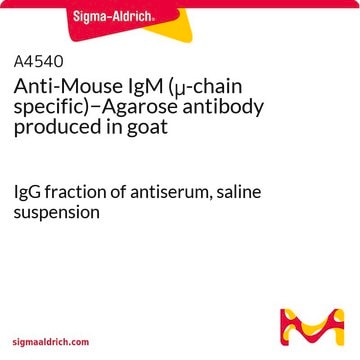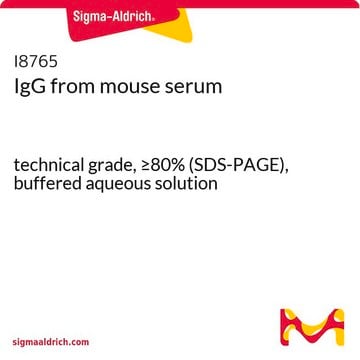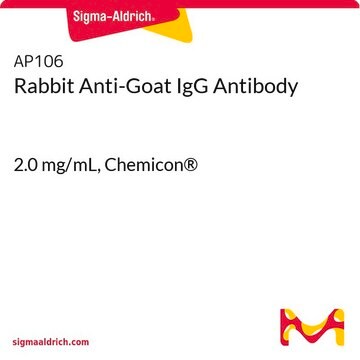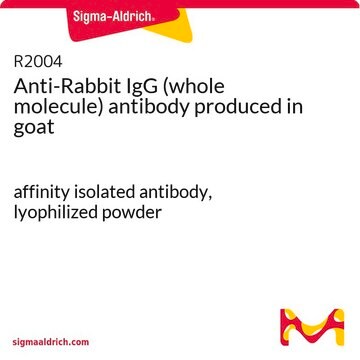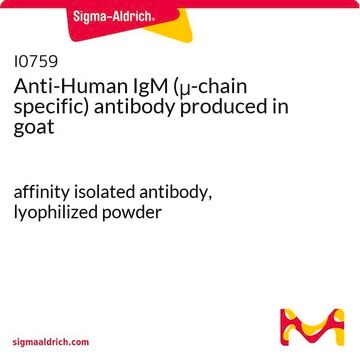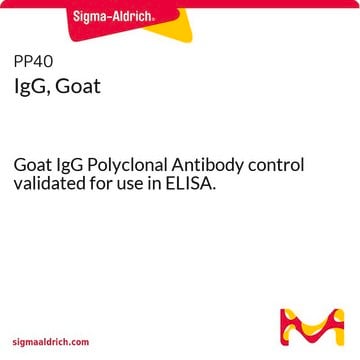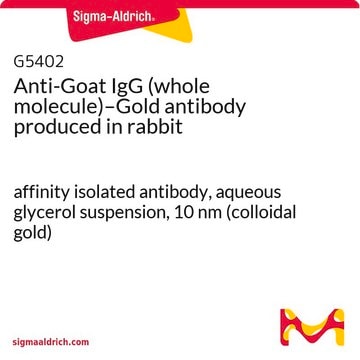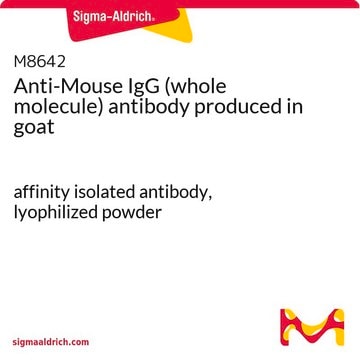General description
IgG is present in large quantities in the human serum. It constitutes about 10-20% of the plasma proteins. IgG is composed of glycoproteins, out of which it is 82-96% proteins and 4-18% carbohydrates. It consists of four sub-classes i.e IgG1, IgG2, IgG3, and IgG4. IgG is composed of four polypeptide chains-two heavy chains (γ chains) and two light chains (κ or λ chains) which are linked by inter-chain disulfide bonds. The heavy chains consist of a N-terminal variable domain (VH) and three constant domains (CH1, CH2, CH3). A hinge region exists between the CH1 and CH2 region. The light chains have one N-terminal variable domain (VL) and one constant domain (CL). The heavy and the light chains are linked at VH and CH1 domain to form the Fab arm (Fragment antigen binding). The antigen binds to the V regions of the antibody.
The product binds to all goat Igs.
Immunogen
Goat IgG purified from a pool of normal goat serum.
Application
Anti-Goat IgG (whole molecule) antibody has been used in immunohistochemistry and in lateral flow strips (LF- strips).
Anti-Goat IgG (whole molecule) antibody produced in rabbit was used as control antibody in shear stress experiments conducted on porcine endothelial cells. It was used in ChIP assay to study the H19 imprinting control region in transgenic Drosophila.
Biochem/physiol Actions
IgG antibody subtype is the most abundant serum immunoglobulin of the immune system. It is secreted by B cells and is found in blood and extracellular fluids and provides protection from infections caused by bacteria, fungi and viruses. Maternal IgG is transferred to fetus through the placenta that is vital for immune defense of the neonate against infections.
IgG, a monoclonal antibody can be cleaved at the hinge region by nonspecific proteases like papain and pepsin. This can result in univalent Fab fragments or bivalent F(ab′)2 fragments. These two enzymes have a broad substrate specificity resulting in heterogenous fragments.
Physical form
Solution in 0.01 M phosphate buffered saline, pH 7.4, containing 15 mM sodium azide as preservative.
Preparation Note
Anti-Goat IgG (whole molecule)is an affinity isolated polyclonal antibody developed in rabbit using goat IgG purified from pooled goat serum as the immunogen. The antibody is purified to remove rabbit serum proteins including immunoglobulins which do not specifically bind to goat IgG.
Analysis Note
Each milliliter of product contains 2.0-2.5 mg of specific antibody measured by quantitative precipitation. Identity and purity is determined by immunoelectrophoresis(IEP).
Disclaimer
Unless otherwise stated in our catalog or other company documentation accompanying the product(s), our products are intended for research use only and are not to be used for any other purpose, which includes but is not limited to, unauthorized commercial uses, in vitro diagnostic uses, ex vivo or in vivo therapeutic uses or any type of consumption or application to humans or animals.



